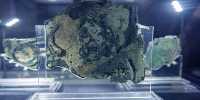A few weeks ago, we asked people to send us information (most different types of science) that made them feel uncomfortable. It was a bad idea and we regret it. The events keep coming they do not stop and they provide you with a summary of the discomfort. Below are some of our “favorites”. We will jump in if we need to expand. A popular phenomenon that has thrown at us thousands of times is that some tumors can develop into teeth, which is completely true.
These usually formed in the ovaries, testicles and tailbone, although they found all over the body. These are not limited to skin, hair and teeth – surgeons found “a skull-like, bone shell” in a specially developed teratoma in a 16-year-old teenager. Some of the ones found, among others, contain bone and nervous system components. Although they can cause discomfort (as you imagined), mature teratoma like these are usually not dangerous and can be surgically removed with minimal complications for the patient. It was another favorite. One theory is that he suffered from Gillian-Barry Syndrome and led to a premature diagnosis of his death. I told you these would be frustrating. This belief continued in some circles until the 1980s, and surgeons operated on young children without anesthesia, believing that not taking the risk of not using the drug was good for their health.
One study found that between 1954 and 1983, 77 percent of newborns who needed surgery to repair a serious vascular defect given only muscle relaxants instead of anesthetic nitrous oxide instead of an anesthetic. Yes, this is much more true than comfortable. From 1597 until the C-sections became safe, a surgery known as symphysiotomy performed while the baby was struggling to get out. The pelvic symphysis – a joint made of cartilage above the valve – cut to widen the pelvis and make delivery smooth. Like all surgical procedures of the time, it was not without risk, and the speed was significant. The less time spent on the operation, the less likely the patient is to hit or have a serious infection.Towards the end of the eighteenth century, John Scotland’s two men, John Aitken and James Jeffrey, came up with a solution to do the job more quickly and efficiently: a real chainsaw with a notch. The world’s first chainsaw was a flexible saw based on a toothed watch chain that moved around with the crank of the hand. Now, instead of looking down and seeing a doctor cut in your pelvis, you look down and see that the doctor who treats you with the same treatment as the doctor who treats you with the same treatment is more reassured.















